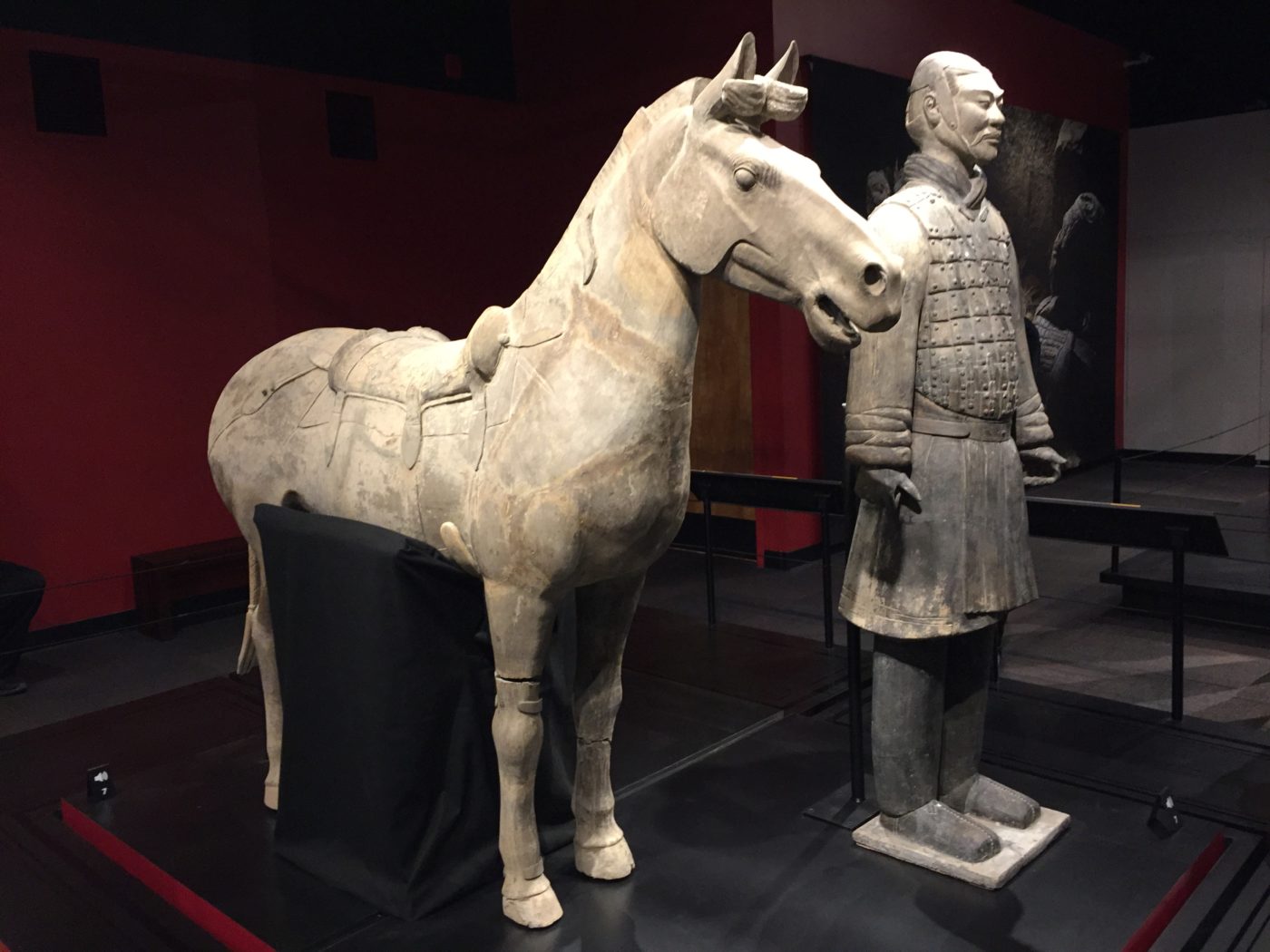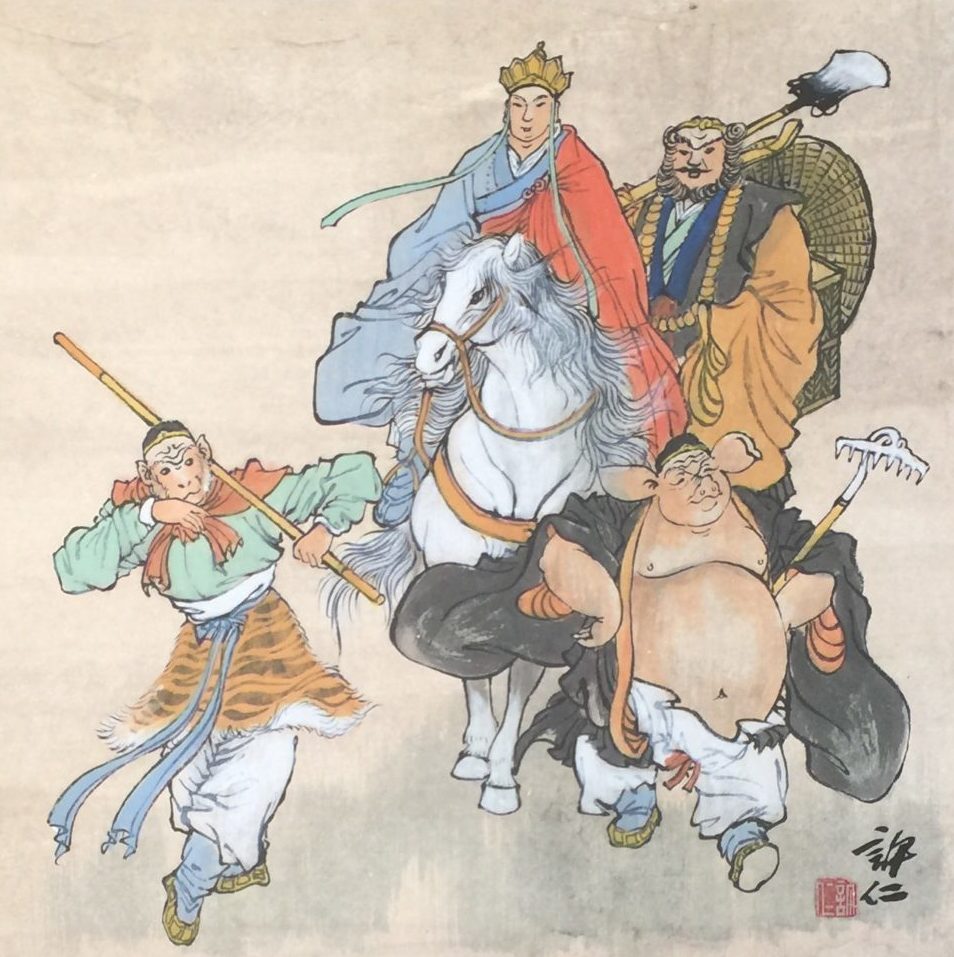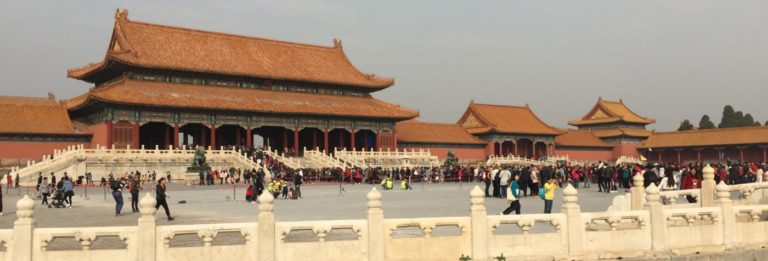The Warring States Period was brought to a brief end by Qin Shi Huang in 221 BC who declared himself the first emperor of China. He had taken the field by brute force and managed to hold on for about fifteen years before passing on. His enduring legacy is the remarkable mausoleum and army of terra cotta warriors at Xi’an. The history of this stunning monument can be found in Terra Cotta Warriors: Guardians of China’s First Emperor.

The Han Dynasty followed Qin and lasted over four hundred years, from 206 BC to 220 CE. To this day, the primary ethnicity of China is referred to as the “Han Chinese”. Of the 1.3 million total population, 92% claim to be Han, the largest ethnic group in the world. As a side note, it is interesting that the native populations of the Yukon Territory in Canada, the eastern end of the Beringia Land Bridge of the last major Ice Age, also refer to themselves as “Han”. Maybe there is a connection.
The Han period was generally prosperous, if not peaceful. Badgered by the Central Asian tribes, the Han ultimately managed to put them in their place, expanding their influence westward. Setting aside their differences, trade picked up and the Silk Road developed. Caravans of Chinese silks and spices made their way through daunting terrains of deserts and mountains, all the way to Persia, Turkey and Europe. The Silk Road in World History (New Oxford World History) and the recent The Silk Roads: A New History of the World
.
All good things come to an end. The Han Dynasty crumbled into the “Period of the Three Kingdoms.” Roughly split between the North (north of the Yangtze River), South (south of the Yangtze River), and West, (the mountains), three loosely defined states marched against each other for about sixty years.

This particular time of chess-like strategies, shifting alliances, and cold-blooded brute force, was later glamorized in the fourteenth century historical novel, Three Kingdoms (Chinese Classics, 4 Volumes). This is one of the four primary works of Chinese literature. Every school kid in China knows this extensive story and all its characters. It you are going to China, this is an important book to read.
The heroes are the three companions, Liu Pei, Kuan Yu, and Chang Fei, and their mentor/strategist, Chuko Liang. The antagonist is the scoundrel Ts’ao Ts’ao (or Cao Cao). Part history, part fiction, the story combines with The Art Of War to provide insights into the political and military actions of present day China. As it turns out, the mausoleum for general Ts’ao Ts’ao was recently discovered in late 2009 in Henan Province. General Kuan Yu, shown above, is so revered for his steadfast morality as a warrior that you will find find him everywhere, brandishing his halberd, in temples, statues, and images.
It took over three hundred years for things to finally settle down and for the Tang Dynasty to unite the country. The Tang lasted almost three hundred years, from 618 to 907 CE. During this period, the activity along the Silk Road continued to bring not only goods but ideas to and from China.

Somewhere in the second century CE, Buddhism was introduced to China and started to have an influence. Soon after the Tang throne was established, a Buddhist monk named Xuanzang is sent “by the Great Tang Emperor” to India to bring back the true Buddhist Sutra, the teachings of Buddha. He departed in 626 CE and returned nineteen years later in 645 CE. His adventures were transcribed in 646 as the “Great Tang Records on the Western Regions”.
Nine hundred years later, in the sixteenth century, the story of the trip was fictionalized fantastically into another of the four primary works of Chinese literature, https://www.amazon.com/Journey-Chinese-Classics-Classic-Volumes/dp/7119016636/ref=sr_1_1?keywords=Journey+to+the+West&qid=1580276721&s=books&sr=1-1.
Again, every Chinese school kid knows this story and they all want to be the Monkey King. This supernatural character is at once magical, skillful, irreverently divine, and very funny. The novel is a great introduction to the symbolic and superstitious aspects of Chinese lore. One theme of the book is the continuous tension between Confucianism, Taoism, and Buddhism.
The Tang Dynasty fell and yielded to the Song Dynasty, which also lasted over three hundred years, from 960 to 1279 CE. During this reign, an outlaw named Song Jiang and his loyal band of lovable brigands harassed the local corrupt government officials and spawned a folklore similar to Robin Hood. They ultimately surrendered and entered into the service of the Emperor. By the fourteenth century, these stories were compiled in the third of the four primary works of Chinese literature, The Water Margin: Outlaws of the Marsh: The Classic Chinese Novel (Tuttle Classics) or Outlaws of the Marsh (Chinese Classics, Classic Novel in 4 Volumes)
. The Chinese know these legends as “The 108 Heroes”.




